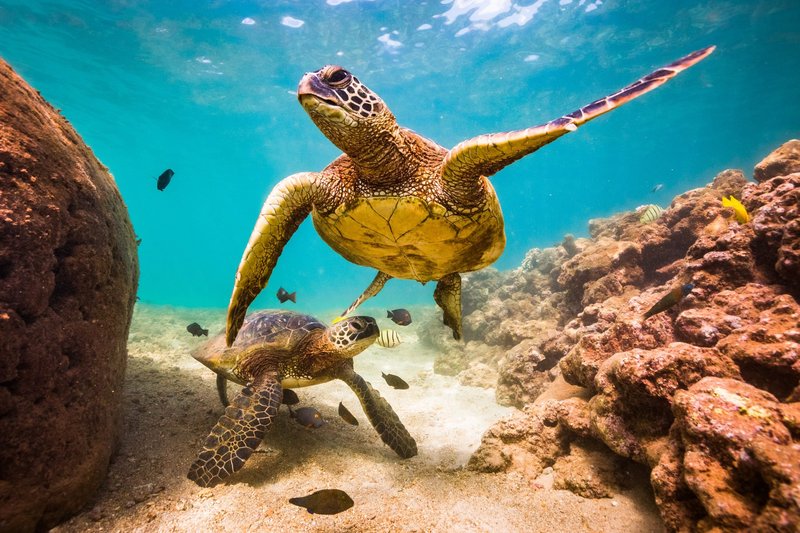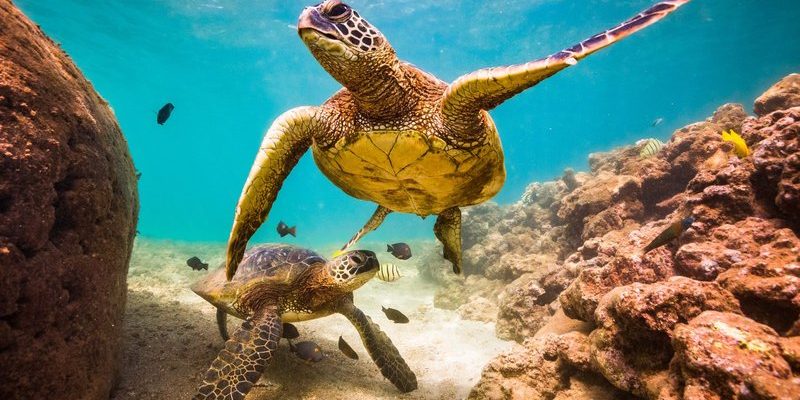
Imagine if the ocean was like a bustling city. Just like every city has its vital workers—from the garbage collectors to the construction crews—the ocean relies on its own set of characters to keep everything running smoothly. Green sea turtles help maintain the health of seagrass beds and coral reefs, chews on jellyfish populations, and supports a complex web of marine life. So, let’s dive into the world of green sea turtles and uncover how they fit into the grand scheme of things—after all, understanding their role can inspire us to take better care of our oceans.
What Are Green Sea Turtles?
Green sea turtles are one of the largest species of sea turtles, weighing between 240 to 420 pounds on average. They can grow to about 3 to 4 feet in length! These turtles are named for the greenish color of the fat beneath their shell, which comes from their herbivorous diet primarily consisting of seagrass and algae.
Their lifespans can reach up to 80 years or more, which is quite impressive! However, like many marine animals, they face significant threats from human activities—such as habitat loss, pollution, and fishing practices. Knowing more about green sea turtles helps highlight their importance in the marine ecosystem and emphasizes the need for their protection.
Seagrass Ecosystems and Grazing Habits
One of the most significant contributions of green sea turtles is their role in the seagrass ecosystem. These turtles are often referred to as “ecosystem engineers” because their grazing habits help maintain the health of seagrass beds. When they munch on seagrass, they naturally promote new growth.
Here’s the thing about seagrass beds: they act like underwater meadows, providing habitat and food for various marine species. By eating the grass, green sea turtles prevent it from becoming overgrown, which allows for sunlight to reach the seabed, enabling more plants to thrive. This process helps create a diverse habitat for fish, crabs, and other marine creatures, ensuring a rich environment for various marine life.
Impact on Coral Reefs
Coral reefs are often called the “rainforests of the sea,” and for a good reason. They host an incredible variety of life. Green sea turtles indirectly support these vibrant ecosystems by maintaining healthy populations of certain species, like jellyfish, which can disrupt the balance if their numbers get too high.
When green sea turtles graze on seagrass, they promote the clarity of the water, making it easier for sunlight to penetrate down to the coral reefs. Plus, by controlling the population of herbivorous species, they help keep the delicate balance of the reef ecosystem intact. Without them, you might see more algae and fewer corals, which can devastate the marine life depending on those reefs for habitat.
Supporting Marine Biodiversity
Green sea turtles are also integral to the overall health of the ocean. Their existence supports numerous species, forming a web of life that begins with them and extends to various fish, birds, and marine mammals.
Did you know that when green sea turtles migrate to nesting sites, they help create nutrient-rich environments? Their nests provide essential minerals that feed the surrounding marine ecosystem. Plus, their movements across the ocean carry nutrients from one part of the ocean to another, helping to support marine life far and wide. This makes them crucial for marine biodiversity and enhances the resilience of ocean ecosystems.
Threats and Conservation Efforts
Despite their importance, green sea turtles face numerous threats. Among them are climate change, which alters their nesting beaches and the temperatures of the waters they inhabit. Additionally, plastic pollution poses a severe risk, as these turtles often mistake plastic bags for jellyfish—an unfortunate misconception that can lead to serious health issues.
Conservation efforts are vital for protecting green sea turtles. Many organizations focus on preserving nesting beaches, reducing plastic waste, and promoting responsible fishing practices to ensure these turtles can thrive. Local communities are also getting involved, organizing beach clean-ups and educational programs that raise awareness about the importance of protecting marine life.
The Human Connection to Green Sea Turtles
You might be wondering how all this relates to you. It’s simple: we all play a role in the health of our oceans. By supporting sustainable practices and protecting marine environments, we contribute to the wellbeing of green sea turtles and, in turn, the entire marine ecosystem.
You can help by being mindful of your plastic use, supporting conservation groups, or even participating in local beach clean-up events. Every small action helps ensure future generations get to experience the wonder of green sea turtles and the beauty of our oceans.
In summary, green sea turtles are essential players in the marine ecosystem, maintaining healthy seagrass beds, supporting coral reefs, and aiding in marine biodiversity. Their gentle grazing habits and long migrations greatly influence the health of our oceans.
As we continue to face challenges like climate change and pollution, understanding and advocating for these remarkable creatures becomes increasingly important. So, the next time you think about the ocean, remember the green sea turtle—the heroes of the sea—working tirelessly to keep our underwater world vibrant and healthy. By taking steps to protect them, we’re also safeguarding the future of our oceans.

